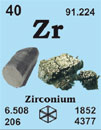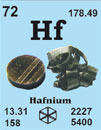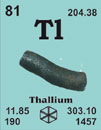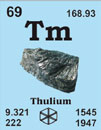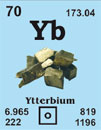Nickel 28Ni58.71
1751 von A.F. Cronstedt in Stockholm, Schweden, entdeckt.
[Kommt von Kupfer-Nickel und bedeutet entweder Teufels-Kupfer oder St. Nikolaus-Kupfer]
French: nickel
English: nickel
Italian: nichel
Spanish: niquel
Beschreibung: Silberweißes Metall, glänzend, verformbar und duktil. Korrodiert nicht, ist löslich in Säuren, außer konzentrierter HNO3, wird nicht von Alkalien angegriffen. Verwendung: Legierungen, Münzen, Katalysatoren, Elektroplattierung von Metallen.
Nickel single crystal properties
| State: |
single crystal |
|---|
| Crystal structure: |
fcc |
|---|
| Production method: |
Czochralski |
|---|
| Standard size: |
diameter 10-20mm
thickness 1-2mm |
|---|
| Orientation: |
(100), (110) and (111) |
|---|
| Orientation accuracy: |
<2°, <1°, <0.4° or <0.1° |
|---|
| Polishing: |
as cut, one or two sides polished |
|---|
| Roughness of surface: |
<0.03µm |
|---|
| Purity: |
99.99% |
|---|
| Typical analysis (ppm): |
C 3
H < 1
O 9
N < 5
Cu 1.60
Fe 1.80
Ni < 1
Pb 0.30
Si 0.30
Ga, Hf and Ta are below the detection limit
|
|---|
Materials properties
| Density: |
8.9 g/cm3 |
|---|
| Melting point: |
1452.85 °C / 1726 °K |
|---|
| Boiling point: |
2731.85 °C / 3005 °K |
|---|
| Molar volume: |
6.59 cm3 |
|---|
| Thermal conductivity: |
90.7 [300 K] Wm-1K-1 |
|---|
| Coefficient of linear thermal expansion: |
13.3 x 10-6 K-1 |
|---|
| Electrical resistivity: |
6.84x 10-8 [293 K] Wm |
|---|
| Mass magnetic susceptibility: |
ferromagnetic |
|---|
| Young's modulus: |
199.5 GPa |
|---|
| Rigidity modulus: |
76.0 GPa |
|---|
| Bulk modulus: |
177.3 GPa |
|---|
| Poisson's ratio: |
0.312 GPa |
|---|
| Radii: |
Ni3+ 62; Ni2+ 78; atomic 125; covalent 115 |
|---|
| Electronegativity: |
1.91 (Pauling); 1.75 (Allred); 4.40 eV (absolute) |
|---|
| Effective nuclear charge: |
4.05 (Slater); 5.71 (Clementi); 7.86 (Froese-Fischer) |
|---|
| Number of Isotopes (incl. nuclear isomers): |
14 |
|---|
| Issotope mass range: |
53 -> 67 |
|---|
| Crystal structure, (cell dimentions / pm), space group |
fcc |
|---|
| X-ray diffraction: mass absorption coefficients: |
CuKα 45.7 (µ/r) / cm2g-1
MoKα 46.6 (µ/r) / cm2g-1 |
|---|
| Neutron scattering length: |
1.03 b/10-12 cm |
|---|
| Thermal neutron capture cross-section: |
4.49 sa / barns |
|---|
Biological data
| Biological role: |
Essential to some species, and can act to stimulate metabolism. |
|---|
| Toxicity |
|
|---|
| Toxic intake: |
1 - 3 mg kg-1 |
|---|
| Lethal intake: |
LD50 (acetate, oral, rat)= 350 mg kg-1 |
|---|
| Hazards: |
Nickel and many of its compounds are poisonous, carcinogenic and teratogenic. Nickel carbonyl is extremely tzoxic. |
|---|
| Level in humans |
|
|---|
| Blood: |
0.01 - 0.05 mg dm-3 |
|---|
| Bone: |
<0.7 p.p.m. |
|---|
| Liver: |
0.02 - 1.8 p.p.m. |
|---|
| Muscle: |
1 - 2 p.p.m. |
|---|
| Daily dietary intake: |
0.3 - 0.5 mg |
|---|
| Total mass of element in average [70 kg] person: |
< 15 mg |
|---|
Geological data
| Mineral | Formula | Density | Hardness | Crystal apperance |
|---|
| Garnierite |
(Ni, Mg)6Si4O10(OH)8 |
2.3 - 2.5 |
2 - 4 |
mon., aggregates, bright green |
|---|
| Nickeline |
b-NiS |
5.27 |
3 - 3.5 |
hex., met. copper-red |
|---|
| Pentlandite |
(Ni, Fe)9S8 |
4.8 |
3.5 - 4 |
cub., met., bronze-yellow |
|---|
| Chief ore: |
garnierite, pentlandite (nickeline is rare but was the first mineral from which nickel was extracted |
|---|
| World production: |
510 000 tonnes/year |
|---|
| Main mining areas: |
garnierite in Russia, South Africa, USA; pentlandite in Cananda, South Africa |
|---|
| Reserves: |
70 x 106 tonnes |
|---|
| Specimen: |
available as foil, powder, rod, slugs, spheres and wire. Safe. |
|---|
| Abundances |
|
|---|
| Sun: |
1.91 x 106 (relative to H = 1 x 1012) |
|---|
| Earth's crust: |
c. 80 p.p.m. |
|---|
| Seawater: |
|
|---|
| Residence time: |
|
|---|
| Classification: |
recycled |
|---|
| Oxidation state: |
II |
|---|

 English
English
 Deutsch
Deutsch
